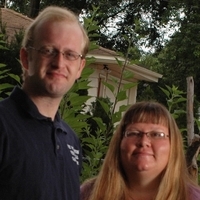Onions are a staple of many backyard gardens, but many gardeners have problems with onions. There can be several reasons for this.
- The main problem that gardeners face with onions is that they will not bulb up, and that is the whole reason of growing onions.
- Part of the problem can be bad soil. Bad soil cause a lack of nutrients; if you don’t replace what you use with organic material such as leaves, compost or organic fertilizer then your soil can suffer. The type of soil you grow in can be a contributing factor to poor onion production. If your soil has a lot of clay or is very sandy, this can be a problem. Onions are shallow root drops that need a regular supply of water. Also planting onions in the wrong area in your garden can be bad too.
- Onions are a unique vegetable, coming in three different categories: long day, short day and mid-day/neutral day. No matter what type of onion you buy to grow, whether from seed or start, they will grow anywhere, but if you want bulbs on your onion then you need to buy the correct type of onion for the area you live in.
- Long day onions are for northern climates roughly from the California and Oregon state line across the county to Baltimore and north. This is where long day onions should be grown during the summer months. Mid-day can be grown from about Fresno to Dallas, Goose Creek in South Carolina and north to that northern line. The southern part of the United States should grow short day onions, and these are grown sometimes in the winter months and very early in the year. You can plant long day onions in the south and short day in the north, and many gardeners do this for the green tops the onion provides, but they will not bulb.
- Before buying or starting your onion seeds, you can search for maps on the Internet that will show the growing areas for these types of onions very clear and offer you some onion varieties that will grow best in your area. Stores do sell all three types of onions for the reason mentioned about the greens.
- You want to start your seeds 10 to 12 weeks before the last frost in your area. You can start them in trays or cups. Be sure they have proper sunlight, spacing and drainage. Loose compost is best for starting your onions.
- You can also buy your starts. There are two types available: bulbs or sets. Sets are the green plants which are the best to buy. They look like little green onions. These are yearlings and will grow best in your garden. The bulbs have been grown to that size and pulled from the ground to be sold. Onions are bi-annual, which means that the second year they will produce seed and when you plant the bulbs. Those onions tend to go to seed because they think, after they have been allowed to bulb slightly and then pulled for sale then planted, that it is their second year.
For more information on onions, you can visit our website.







